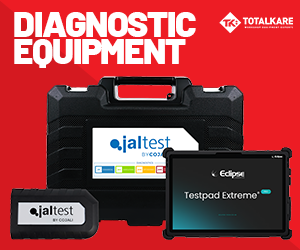‘Microgrid’ buildings to charge EVs
Power management and vehicle transmission specialist Eaton warns that switching Europe’s truck fleet to electrical power as planned will require a doubling of electric generation capacity by 2050.
Its solution is to decentralise power production, augmenting the conventional model of large power stations and a national or regional distribution grid with local resources.
Buildings will play a vital role in power generation, it says – especially larger commercial buildings such as warehouses which can be fitted with large solar panel arrays. Ultimately every building will be its own microgrid, able to generate energy, and store it using second-life batteries from electric vehicles.
Eaton’s strategic acquisition of Swiss EV charging experts Green Motion has enabled it to take part in an enterprise in Switzerland that will see it convert the Y-Parc industrial complex in Yverdon-les- Bains into an intelligent microgrid able to support local business and charge electric vehicles. Vehicles could also return energy using a vehicle-to-grid capability at times of high demand.
François Randin, general manager of Eaton Green Motion, based in Lausanne, Switzerland said: “Businesses are suffering from the steep energy price hikes and looking for some energy self-sufficiency. The demonstrator at Y-Parc, which is called SunnYparc, will show them an alternative. It will demonstrate how they can save money and become more energy resilient through intelligent EV charging infrastructure underpinned by renewables.”
Eaton’s role will focus on the development and supply of high-performance AC and DC Eaton Green Motion charging stations starting with the installation of 25 stations (five of them bi-directional) by the end of 2022, scaling rapidly thereafter. The project target is installation of photovoltaics to produce more than one GWh per year (1 million kWh) and the involvement of up to 350 EVs charging at various times each week from a total of 250 charging stations.
The microgrid will exploit the ‘diversity of use’ of the EVs that connect to SunnYparc over the course of each week to get the most benefit out of charging and discharging them. What this means in practice is that the algorithms controlling the microgrid will intelligently manage the flow of energy between the EVs, the photovoltaics, and the buildings to dispatch available energy to where it is needed, when it is needed, and make excess energy and energy storage capacity available to the grid, if required, for a fee (this is known as flexibility).
When SunnYparc needs energy from the grid to support its own photovoltaic production, the microgrid can determine the least expensive time to buy and store it, although the ambition is to achieve a high degree of self-sufficiency by managing all available energy flows effectively. The benefit to the grid of this type of intelligent aggregation is that it relieves the network of the connection to many vehicles at a single location, as well as offering the flexibility equivalent of a large stationary battery in the batteries of all the EVs connected to chargers.
Eaton is producing modular scalable solar-powered high-speed chargers. For example, solar panels can be used to charge racks of second-life vehicle batteries, which still have 70 per cent of original capacity, capable of storing up to 750 kW/h of electricity for use in a fast charger.












